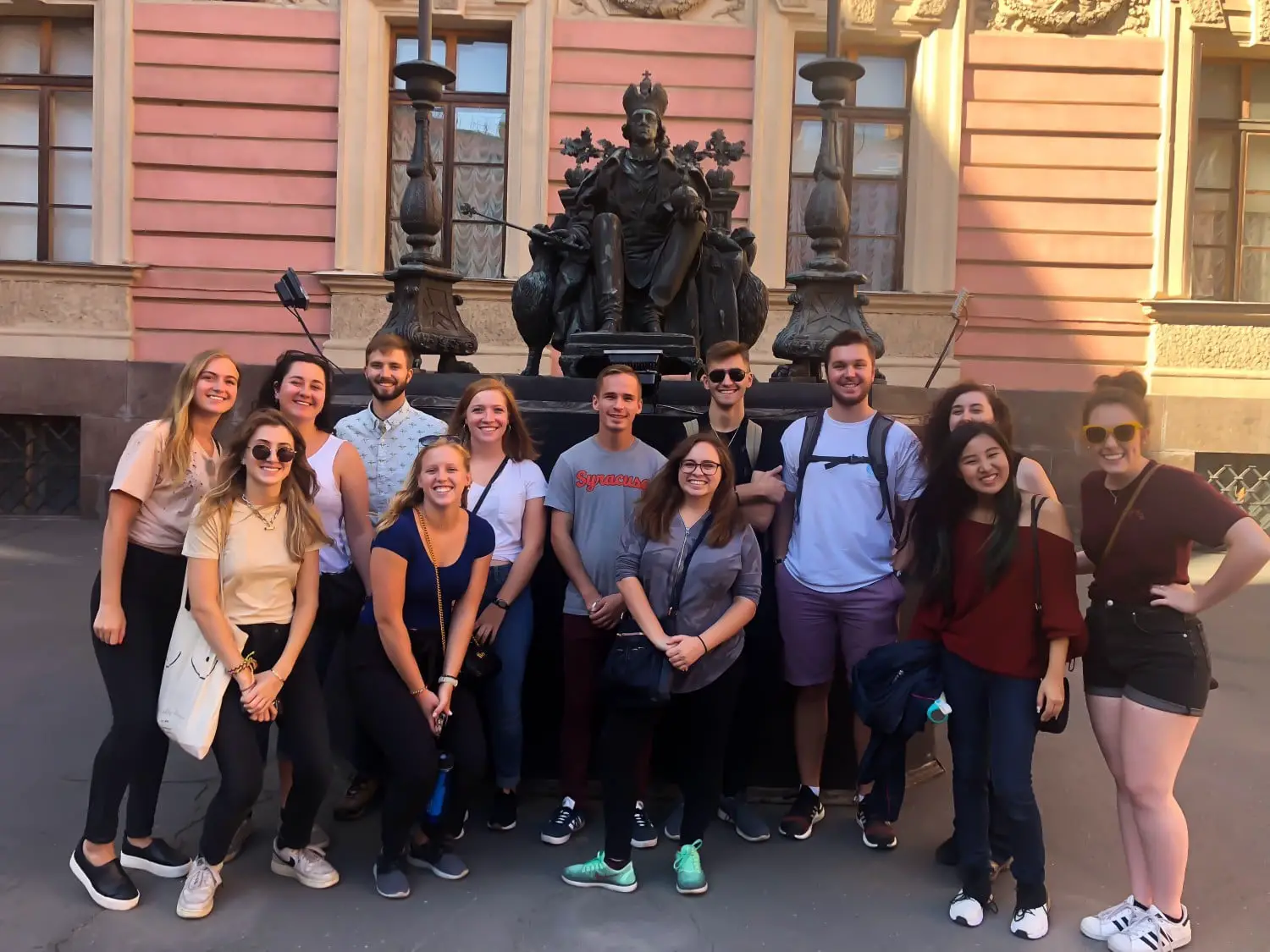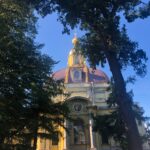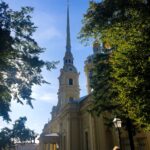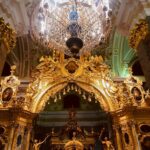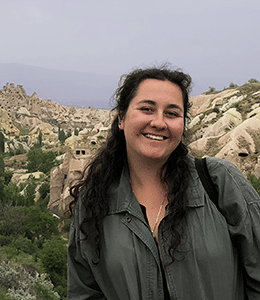As part of our SRAS program, we had a guided tour of the Peter and Paul Fortress.
On a beautiful summer day, we took a tram out to the fortress. Once there, our guide started off by explaining the history of the fortress. Peter the Great established the fortress on May 16, 1703 on Hare Island. At this time, Peter the Great was involved in the Northern War against Sweden, and so he decided to build the fortress to protect the capital from a feared Swedish attack. However, the fortress was never needed for this.
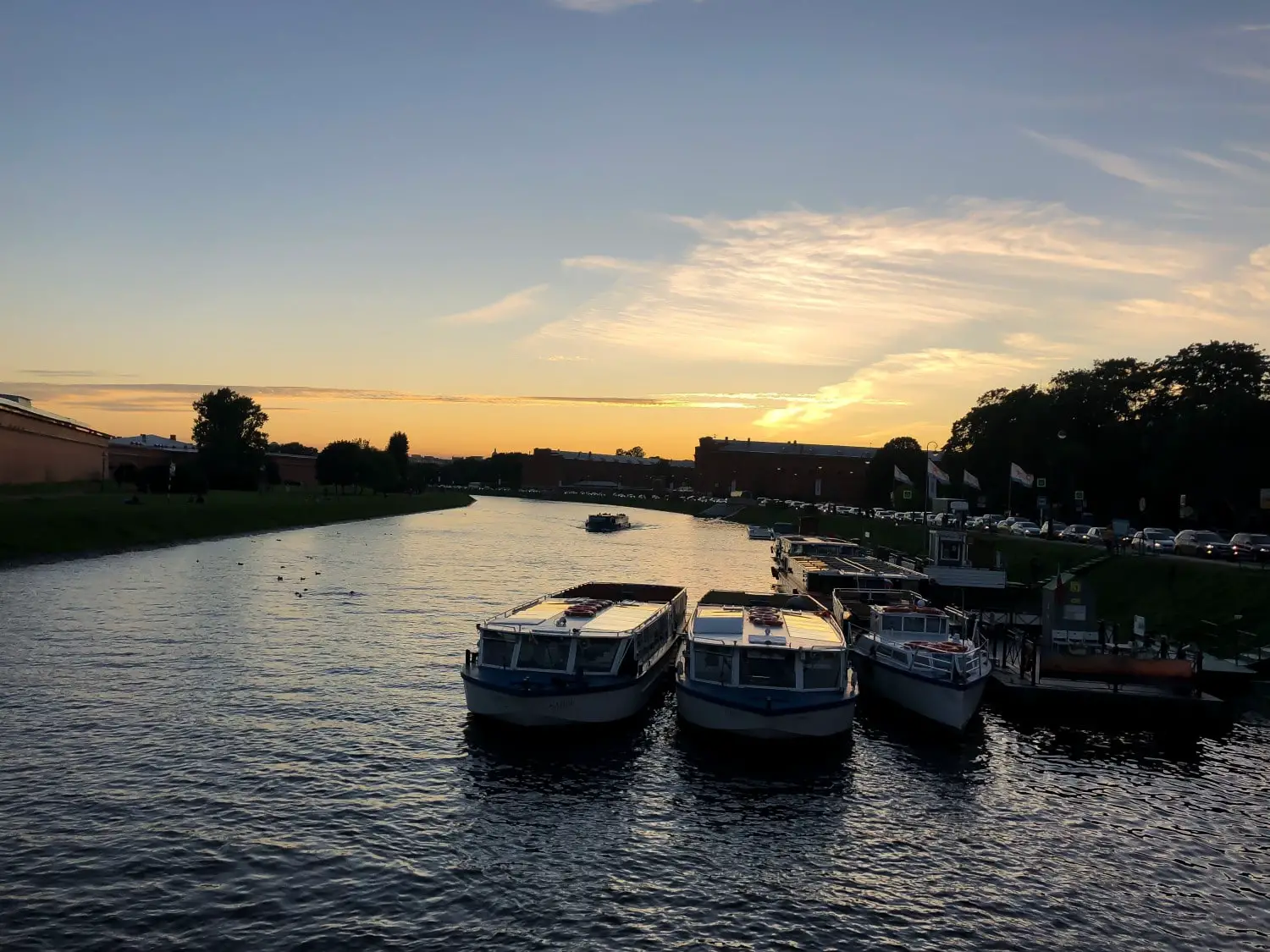
Starting in around 1720, the fort was the base for the city’s garrison, as well as a prison for political prisoners. During the revolution of 1917, the garrison of 8,000 men at the fort declared themselves for the Bolsheviks and took control. All the prisoners were released.
The mutinous soldiers fired around 30 shells from their stronghold at the Winter Palace, located just across the river, in a wider attempt to make the officials there surrender. However, just two shells hit, causing minor damage. The palace was eventually taken, however and the jail filled again, but this time with prisoners from the palace and other Tsarist officials. Over 100 people were executed here over the next three years.
In 1924, the fortress was converted into a museum, but unfortunately, much of the site was damaged by German bombing in WWII. The fortress is now restored, and is an incredibly beautiful place to spend an afternoon exploring.
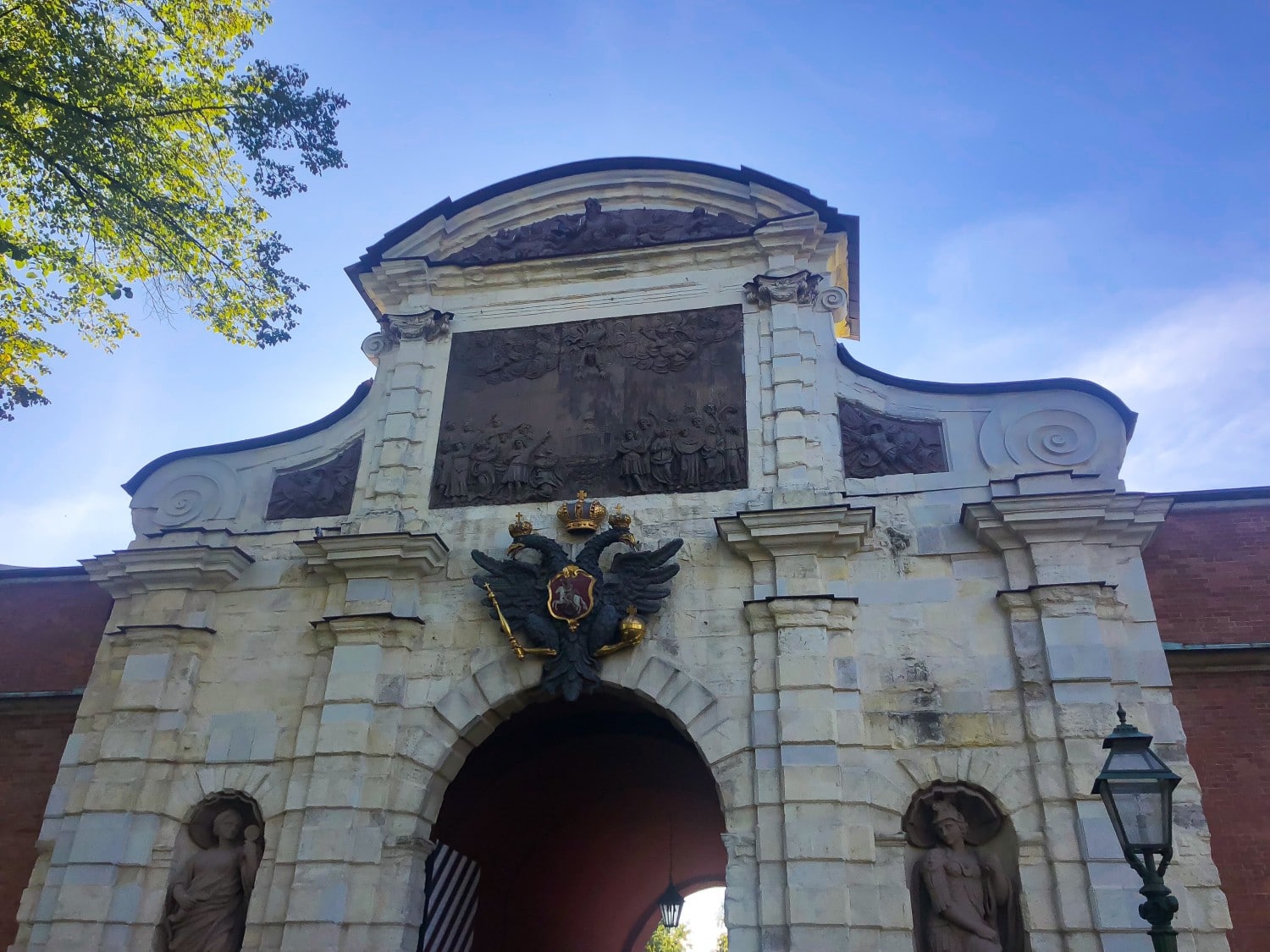
After this historical introduction, we visited the Peter and Paul Cathedral, built within the fortress from 1712 to 1733. It has the tallest bell tower in the city center, standing at just over 400 feet, as well as a gilded, angel topped cupola. Its interior is a complete splendor, covered in gold and pastel colors. The church itself was long the burial place for all the Russian tsars from Peter the Great to Alexander III. On the 80th anniversary of the death of Nicholas II and his family, their bodies were also re-buried in a side chapel.
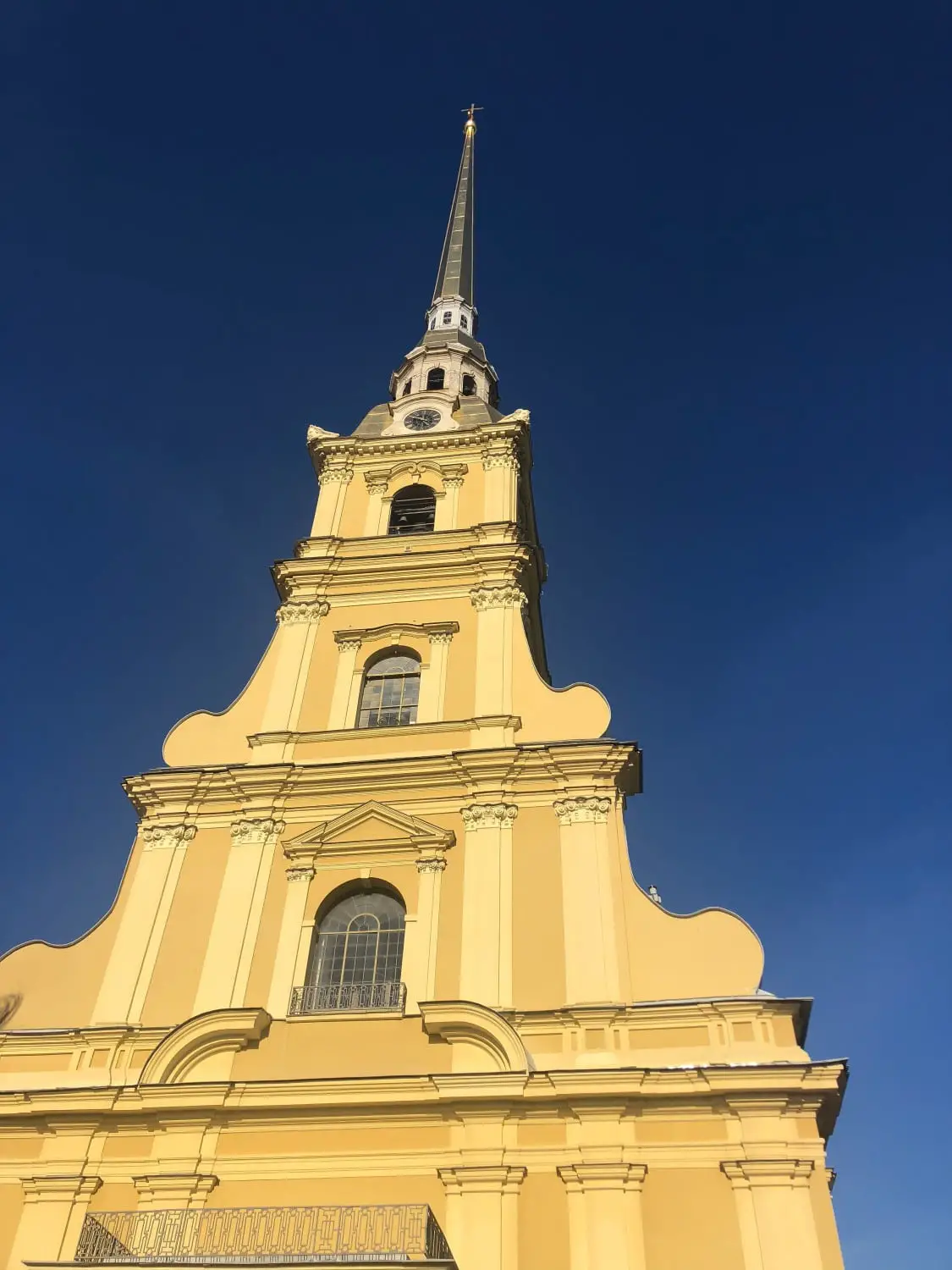
After visiting the church, we walked over to the prison. They have kept it essentially the same, and walking around was very eerie. Our guide explained that the prison’s reputation made it out to be a much worse place than it actually was. The Bolsheviks portrayed it as a horrible place primarily devoted to torture. However, while the prison was no summer camp, prisoners had one hour a day to exercise outside, could go to the banya (Russia sauna), and even had access to books and writing materials.
While there are plenty of other museums and buildings located throughout the old fortress, my favorite part was just outside. Walking out towards the Neva, you are met with a stunning view of the river, and the shining blue Hermitage, as well as the copula of Saint Isaac’s Cathedral in the far distance. During the summer, the beach even has a sand castle festival. Sitting down in the sand was a perfect way to end a wonderful day, overlooking the Neva and with the Peter and Paul Fortress with all its history just behind us.


